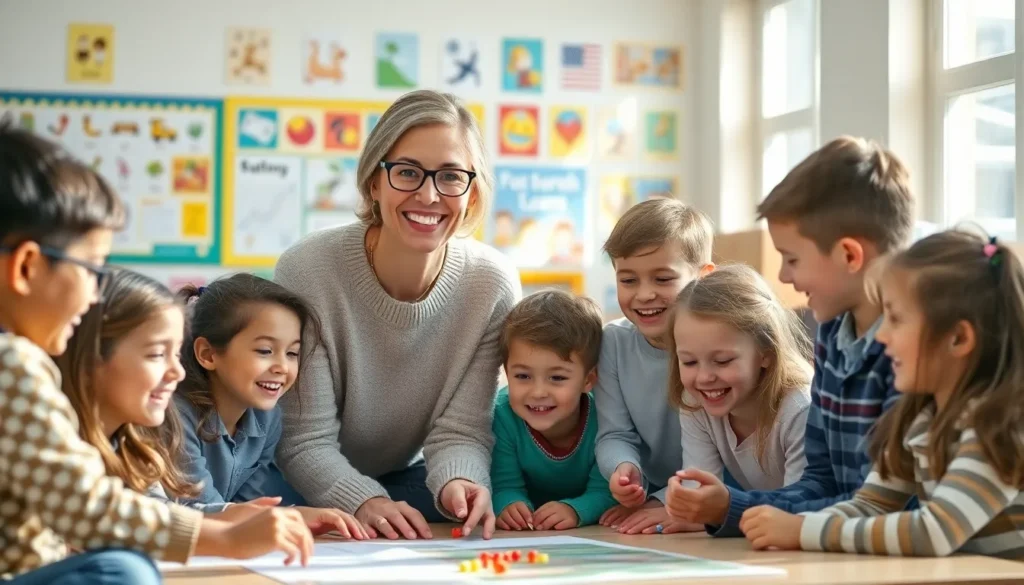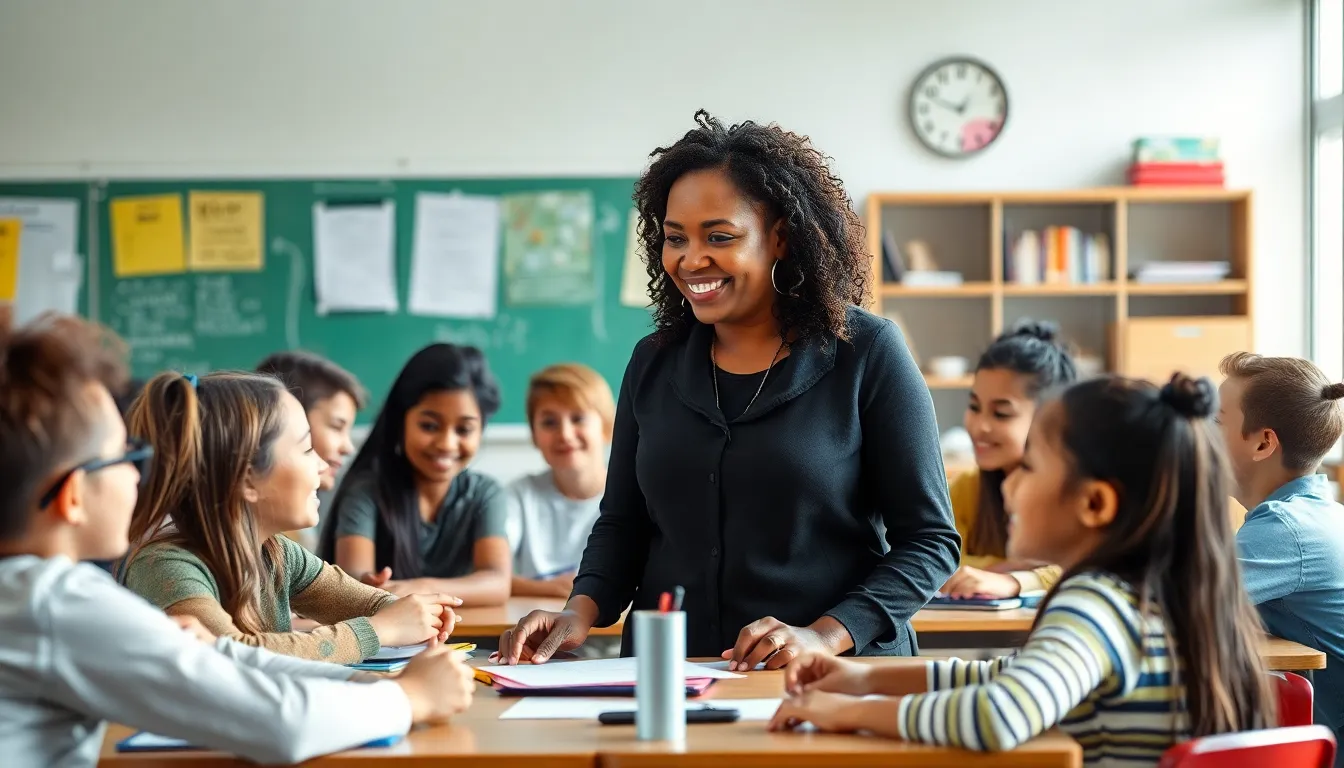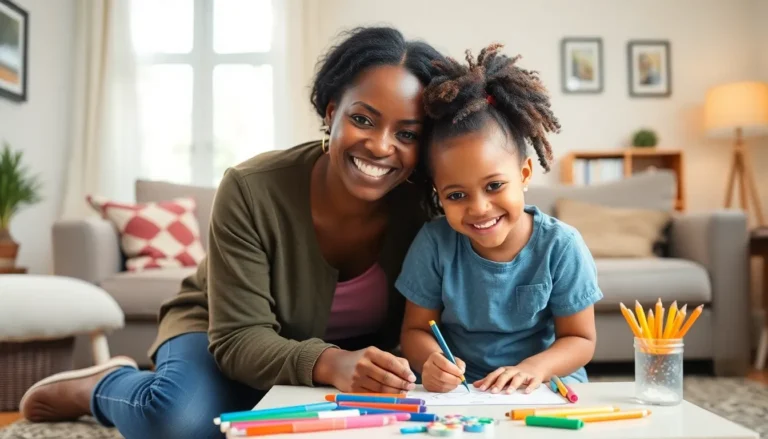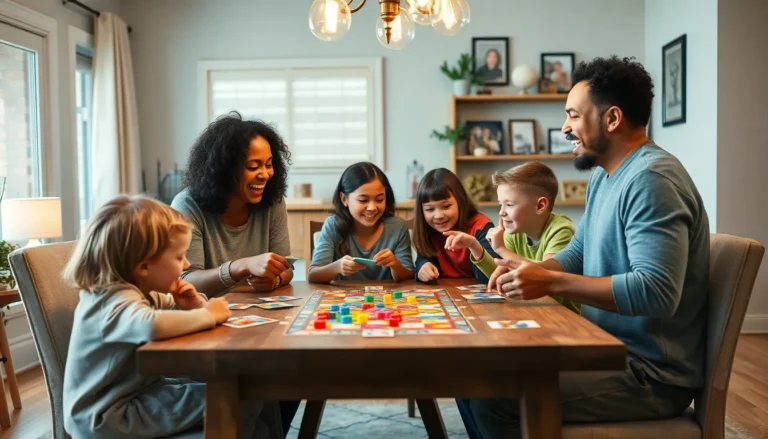In the vibrant world of education, the bond between teachers and students can make or break the learning experience. Imagine a classroom where laughter fills the air and students feel valued. That’s the magic of a strong teacher-student relationship. It’s not just about grades and tests; it’s about connection and understanding.
Understanding Teacher-Student Relationships
Teacher-student relationships play a crucial role in education. A strong bond enhances student engagement and fosters a positive learning environment.
Definition and Importance
Teacher-student relationships refer to the interactions and connections formed between educators and their pupils. These relationships provide emotional support, build trust, and enhance student motivation. Research indicates that positive relationships correlate with better academic outcomes. When students feel valued and understood, they are more likely to participate actively and pursue their educational goals.
Factors Influencing Relationships
Multiple factors influence the dynamics of teacher-student relationships. Communication style significantly impacts how students perceive their teachers. Teachers who show empathy and understanding create a welcoming atmosphere. Classroom environment also plays a vital role; inclusive settings encourage collaboration. Furthermore, individual student backgrounds and experiences shape their responses to educators. Each factor contributes uniquely to the strength of these essential relationships.
Types of Teacher-Student Relationships
Teacher-student relationships can significantly influence student experiences. Two main categories exist: positive and negative relationships.
Positive Relationships
Positive teacher-student relationships foster a supportive learning environment. Teachers who show empathy enhance student engagement and motivation. Trust develops when a teacher respects student opinions. Effective communication strengthens these connections, allowing students to feel valued. Research consistently shows that students in positive relationships achieve better academic outcomes. Classrooms where laughter and encouragement thrive create a safe space for learning. Celebrating individual achievements can further solidify these bonds.
Negative Relationships
Negative teacher-student relationships can hinder a student’s educational journey. When teachers display indifference, students may feel alienated and undervalued. Dismissive attitudes and harsh criticism often lead to a lack of trust. Poor communication exacerbates misunderstandings and fosters resentment. Research indicates that students in negative environments may disengage from learning, impacting their overall performance. Feelings of frustration can arise when expectations remain unclear, further damaging relationships. Addressing these issues promptly is essential for creating a more constructive atmosphere.
Impact on Learning Outcomes
Strong teacher-student relationships significantly affect learning outcomes. These connections foster an environment conducive to academic and emotional growth.
Academic Performance
Enhanced academic performance often stems from positive teacher-student relationships. Research shows that students who feel supported are more likely to achieve higher grades. Increased engagement occurs when teachers understand student needs. Trust in a teacher can lead to greater effort in assignments. Furthermore, collaborative learning opportunities thrive in a supportive classroom. Effective feedback and encouragement also boost students’ motivation to learn. Teachers who build rapport with their students create a space where academic success becomes achievable.
Emotional Well-Being
Emotional well-being connects closely with teacher-student dynamics. Students demonstrating positive relationships often exhibit higher self-esteem and lower anxiety levels. Emotional support from teachers encourages resilience in overcoming challenges. When students feel valued and respected, their willingness to participate grows. The perception of safety in the classroom promotes well-being, allowing for better focus on learning. Additionally, teachers who foster strong bonds can identify and address students’ emotional needs promptly. Consequently, a nurturing environment contributes to an overall positive educational experience.
Strategies for Building Strong Relationships
Building strong teacher-student relationships enhances the educational environment. Various strategies can facilitate these connections.
Communication Techniques
Effective communication techniques lay the foundation for strong relationships. Teachers should encourage open dialogue, allowing students to share thoughts and concerns. Active listening fosters trust, reassuring students that their voices matter. Using positive language enhances motivation, creating a more inviting atmosphere. Regular feedback on performance helps students improve while reinforcing their strengths. Asking open-ended questions encourages deeper thinking and expression, leading to richer interactions. With clear communication, misunderstandings decrease, promoting a supportive classroom environment.
Creating a Supportive Environment
Creating a supportive environment encourages student engagement and connection. Teachers can establish clear expectations that provide structure and security. Recognizing individual strengths and interests allows students to feel valued. Celebrating achievements, no matter how small, boosts confidence and motivation. Incorporating collaborative activities fosters teamwork and camaraderie among students. Providing resources for emotional and academic support helps address individual needs. In a nurturing classroom, students develop a sense of belonging and safety, which enhances the overall learning experience.
Challenges in Teacher-Student Relationships
Challenges often arise in teacher-student relationships, impacting classroom dynamics and student learning. Understanding these hurdles can help educators foster better connections.
Cultural Differences
Cultural differences create diverse expectations and communication styles in classrooms. Students from varying backgrounds may interpret teacher behaviors differently. Teachers who recognize these disparities enhance their ability to connect with students. Adaptability in teaching methods ensures that cultural nuances are respected. Engaging students by incorporating elements from their cultures can foster inclusivity. Thus, recognizing and embracing these differences can strengthen teacher-student bonds.
Classroom Management Issues
Classroom management issues frequently disrupt teacher-student relationships. Disruptive behavior can lead to strained interactions between teachers and students. Teachers who implement clear rules and consistently enforce them create a structured environment. Establishing routines helps students feel secure and focused. When students know what to expect, they are more likely to engage positively. Effective classroom management not only enhances academic performance but also nurtures healthier teacher-student relationships.
Conclusion
Strong teacher-student relationships play a crucial role in shaping a positive educational experience. When students feel valued and understood they’re more likely to engage actively in their learning. This connection not only enhances academic performance but also promotes emotional well-being.
Building these relationships requires intentional effort from educators. By fostering open communication and creating a supportive classroom environment teachers can help students thrive. Addressing challenges that arise, such as cultural differences and classroom management issues, is essential for maintaining healthy dynamics.
Ultimately, prioritizing teacher-student relationships leads to a more enriching and effective learning atmosphere, benefiting both students and educators alike.







